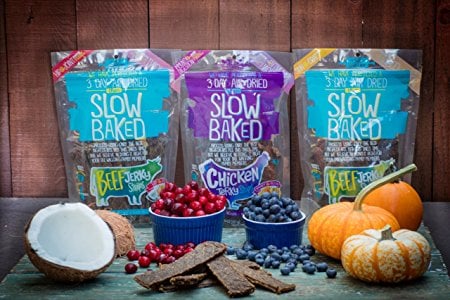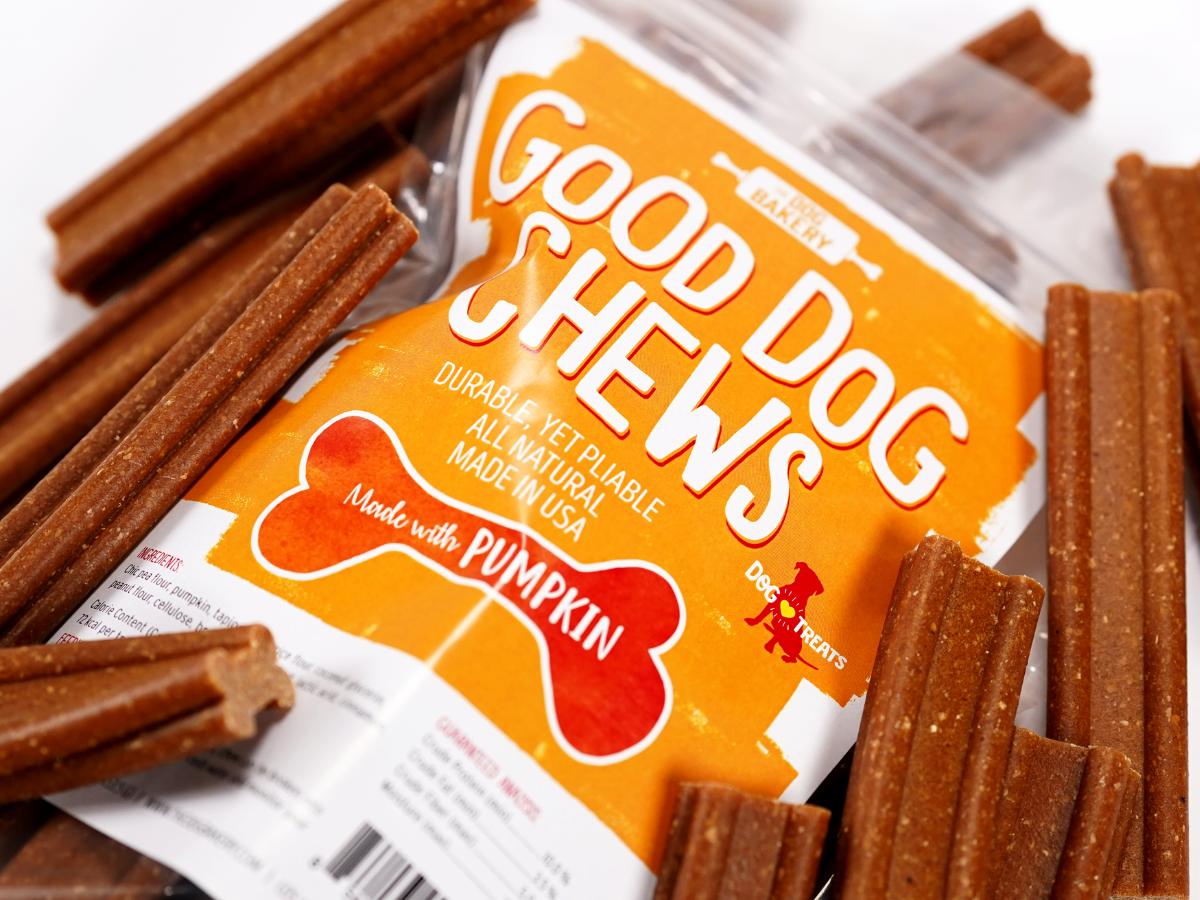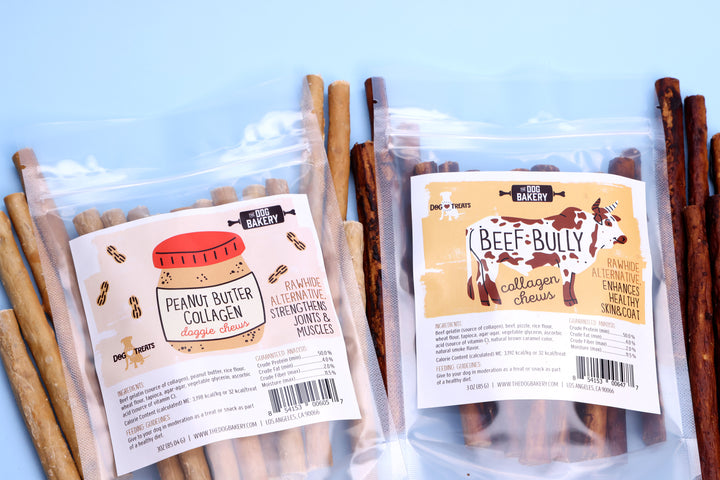Could the Aussiedoodle Be Your Dream Dog? Only If You Can Keep Up!
What do you get when you cross two of the world’s smartest dog breeds, the Australian Shepherd and the Poodle? You get an Aussiedoodle!
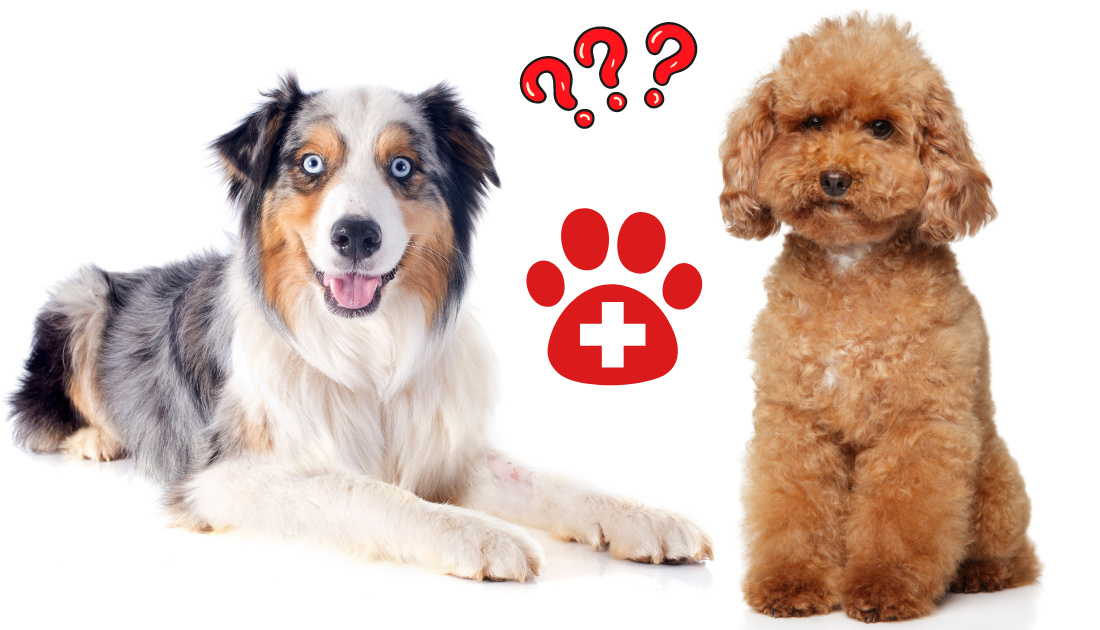
Also called an Aussiepoo or an Aussiepoodle, these mixed-breed dogs have become extremely popular amongst Doodle enthusiasts. Especially loved for their lively, intelligent, eager personalities, Aussiedoodles are easy to train, as long as you are willing to put in the work.
In this guide, we’re talking all things Aussiedoodle from the basics of the breed and simple grooming tips to advice for finding ethical Aussiedoodle breeders and rescues.
Meet 5 Aussiedoodles from Instagram
Chances are good that you’ve encountered an Aussiedoodle or two on the street before. But, you might not have known it! Aussiedoodles come in a wide variety of colors, sizes, body types, fur types, and so on, so it can sometimes be hard to spot one if you don’t know much about this mix.
Let’s take a look at some examples of Aussiedoodle diversity, and meet some adorable pups whose humans generously share their lives on Instagram!
1. Hudson the Chocolate Aussiedoodle
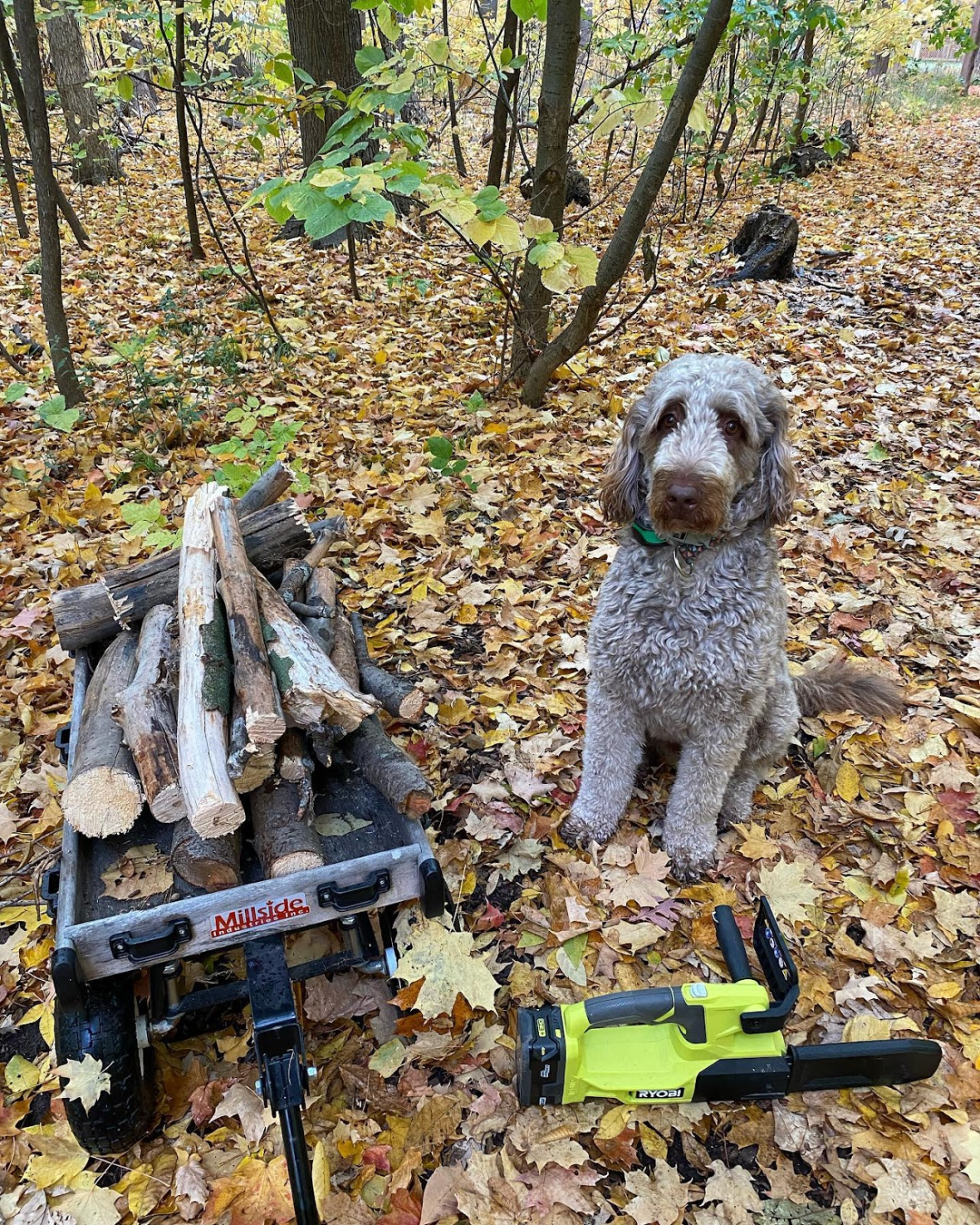
Source: @AussieDoodleHudson
First up is Hudson, a chocolate Aussiedoodle who is ready for just about anything! When Hudson was a little pup, his fur was a deep chocolate brown. As he has gotten older, his fur has lightened up, but he still looks like a teddy bear!
2. Zola the Blue Merle Aussiedoodle
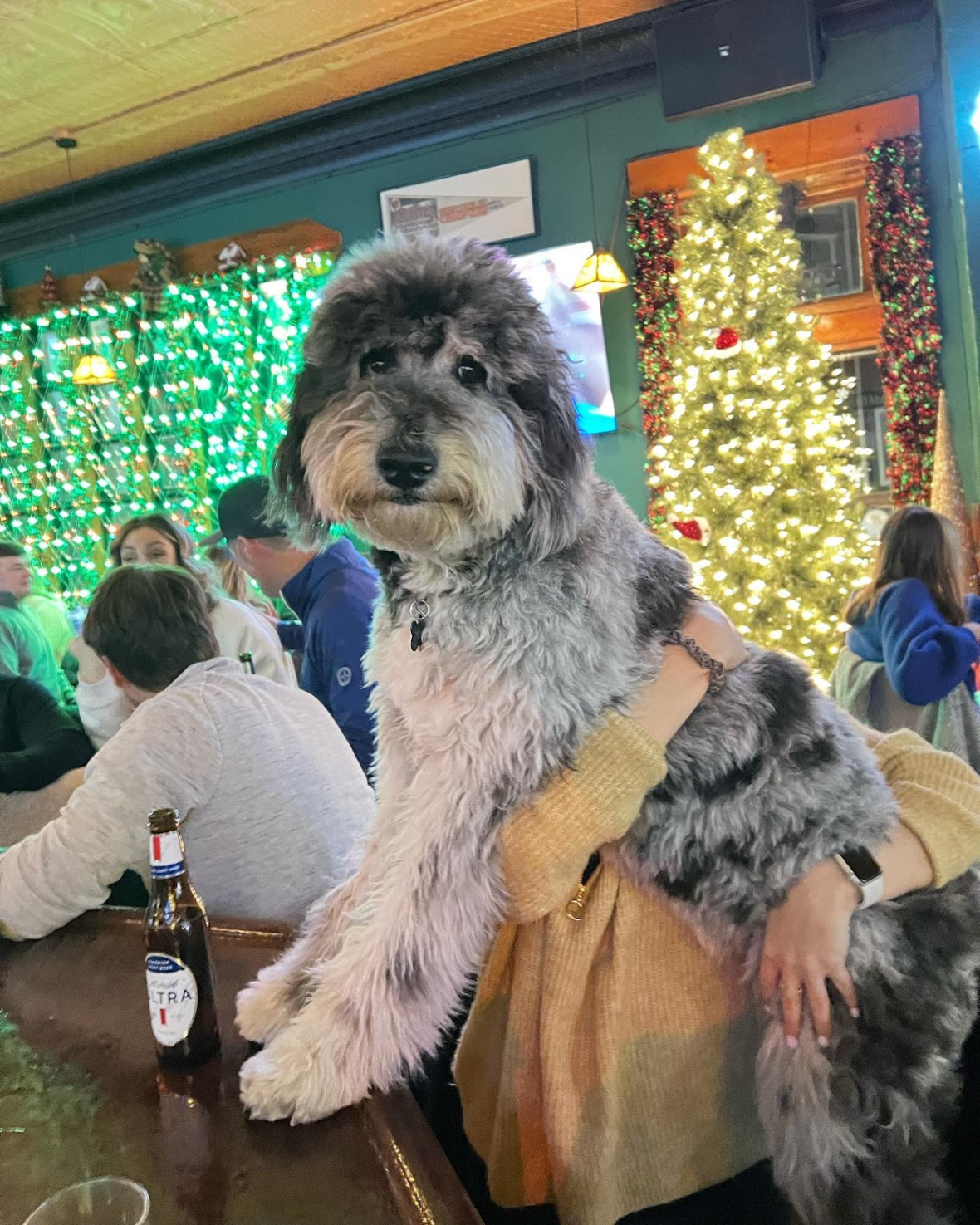
Source: @Zola_The_Aussiedoodle_
Zola is a one-year-old F1 Aussiedoodle from Chicago whose parents can confirm that she’s a “verified sweet girl!” A big, fluffy girl, Zola is a lovely example of a blue merle Aussiedoodle bred correctly! Because she’s F1 (AKA her parents were a purebred Australian Shepherd and a purebred Standard Poodle), there’s no chance she could have inherited two copies of the merle gene.
Double-merle dogs are often born with serious genetic conditions like, deafness, blindness, underdeveloped eyes, weakened immune systems, and more. Unfortunately, some unethical breeders intentionally pair dogs both carrying the merle gene to theoretically increase the chances of producing merle puppies, which bring a significant profit.
If your ideal Aussiedoodle is Merle, be sure to ask as many questions as you can to make sure the breeder you choose is doing everything possible to avoid producing double merle puppies.
3. Birdie the Black and White Aussiedoodle
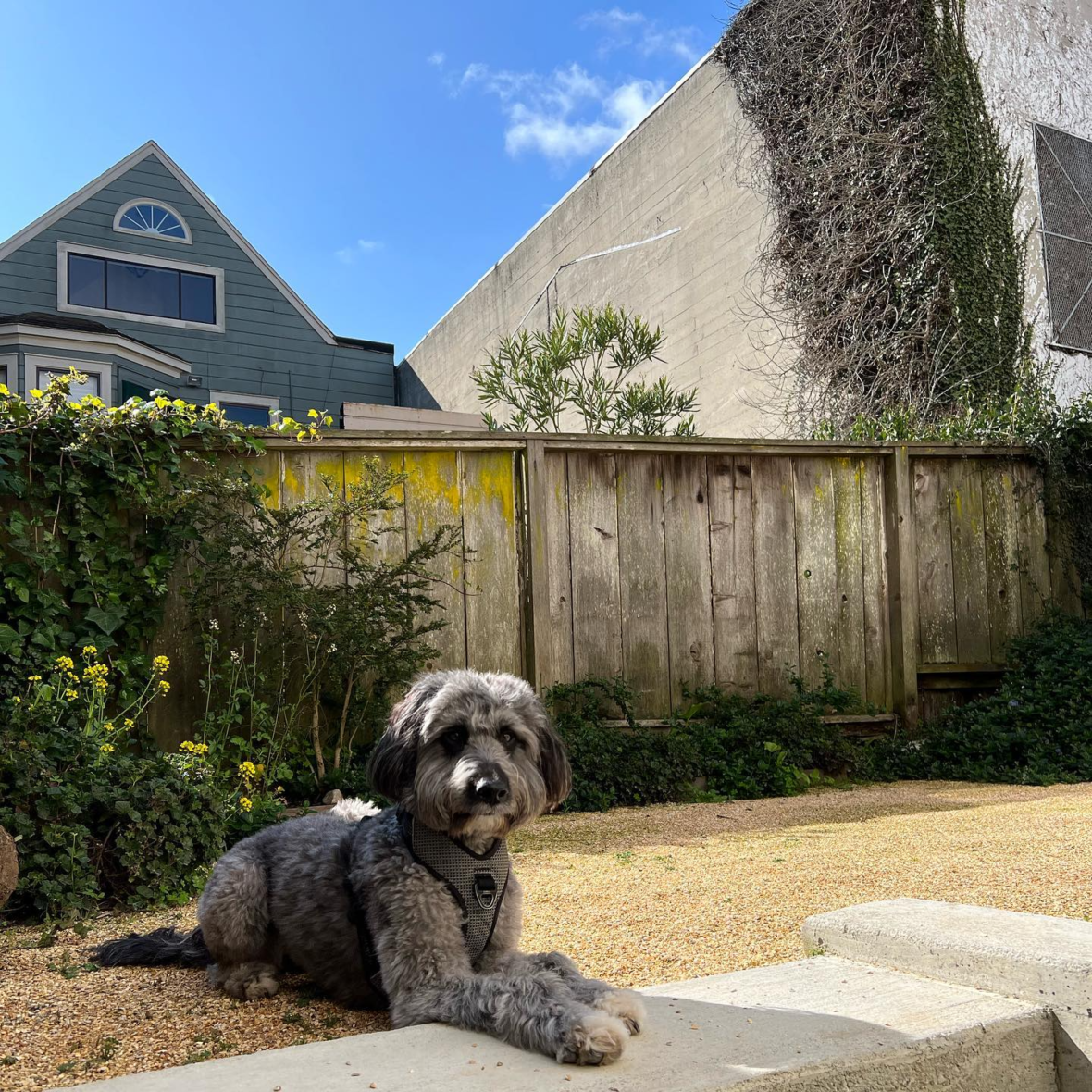
Source: @BirdieByTheBay
Birdie is a black and white Aussiedoodle, but you’ve probably noticed that she looks more gray than black. Like chocolate Aussiedoodles, black and white Aussiedoodles get slightly lighter as they age. Born jet black, Birdie has gotten a little more gray with every groom. This is normal, and most Aussiedoodle owners should expect their dogs to lighten with age.
4. Scooby the Red Merle Aussiedoodle
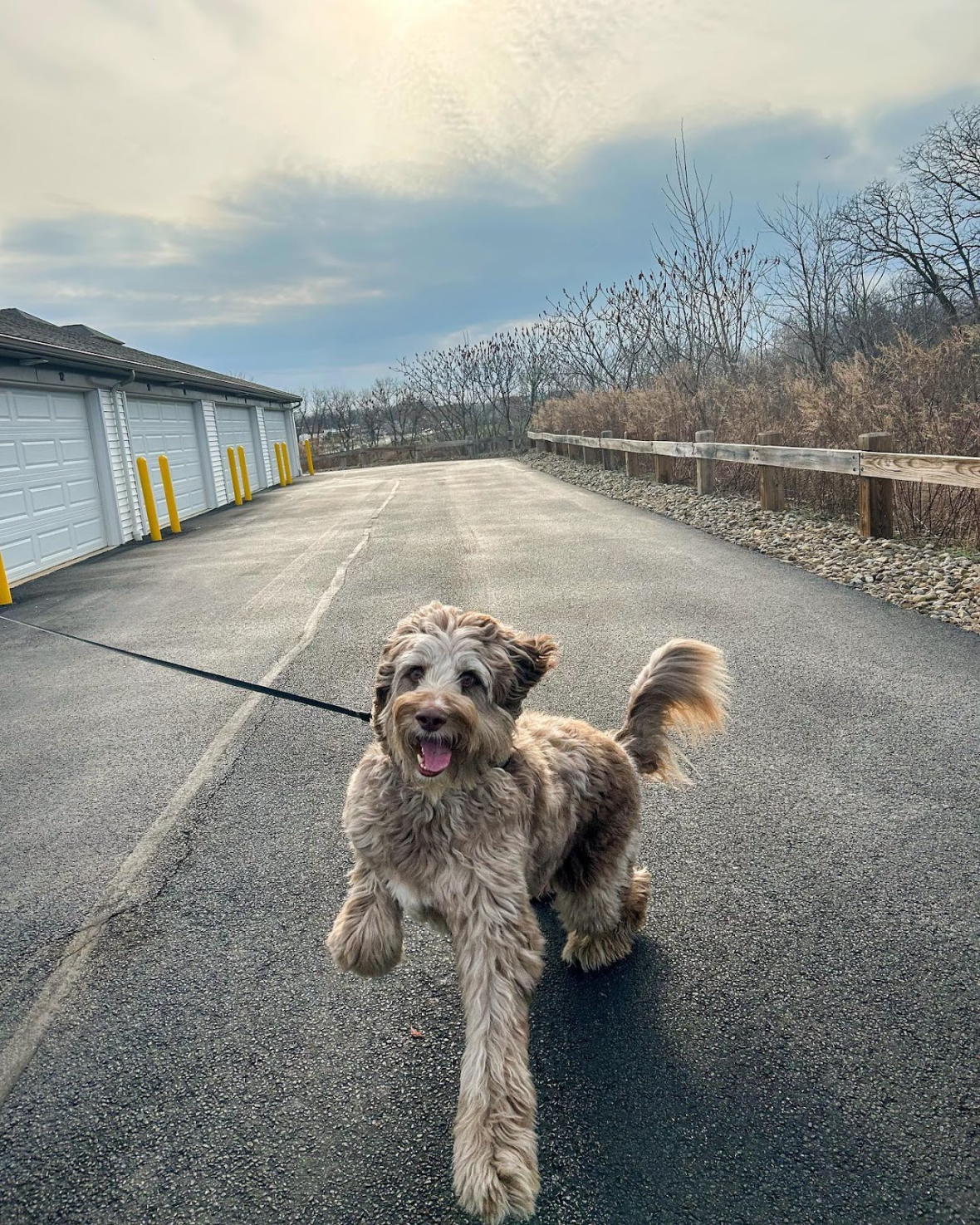
Source: @ScoobTheDood_
This handsome ball of fluff is Scooby, an F1b Aussiedoodle who lives for a good walk with his humans! A slightly more unusual color of Aussiedoodle, Scooby is a red merle whose fur practically glows in the sunshine.
5. Iris the Black Spotted F1b Aussiedoodle
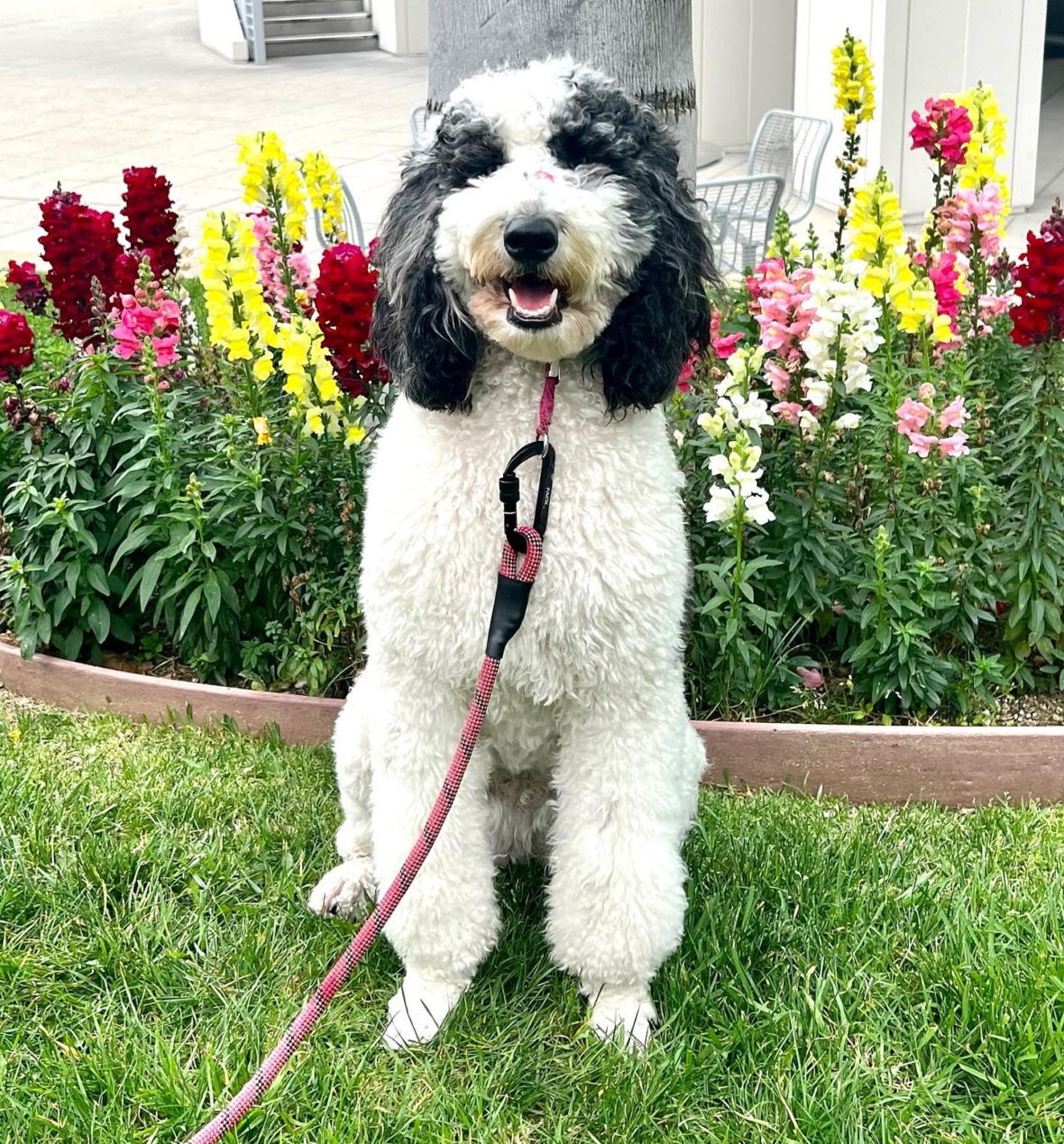
Source: @IrisTheDoodette
Living in beautiful Southern California, Iris is a mostly-white F1b Aussiedoodle with a black mask and black spots! A little ray of sunshine, Iris is happy to do just about anything as long as she’s with her humans or doggy friends.
BONUS: Rudy the Blue Merle Mini Aussiedoodle
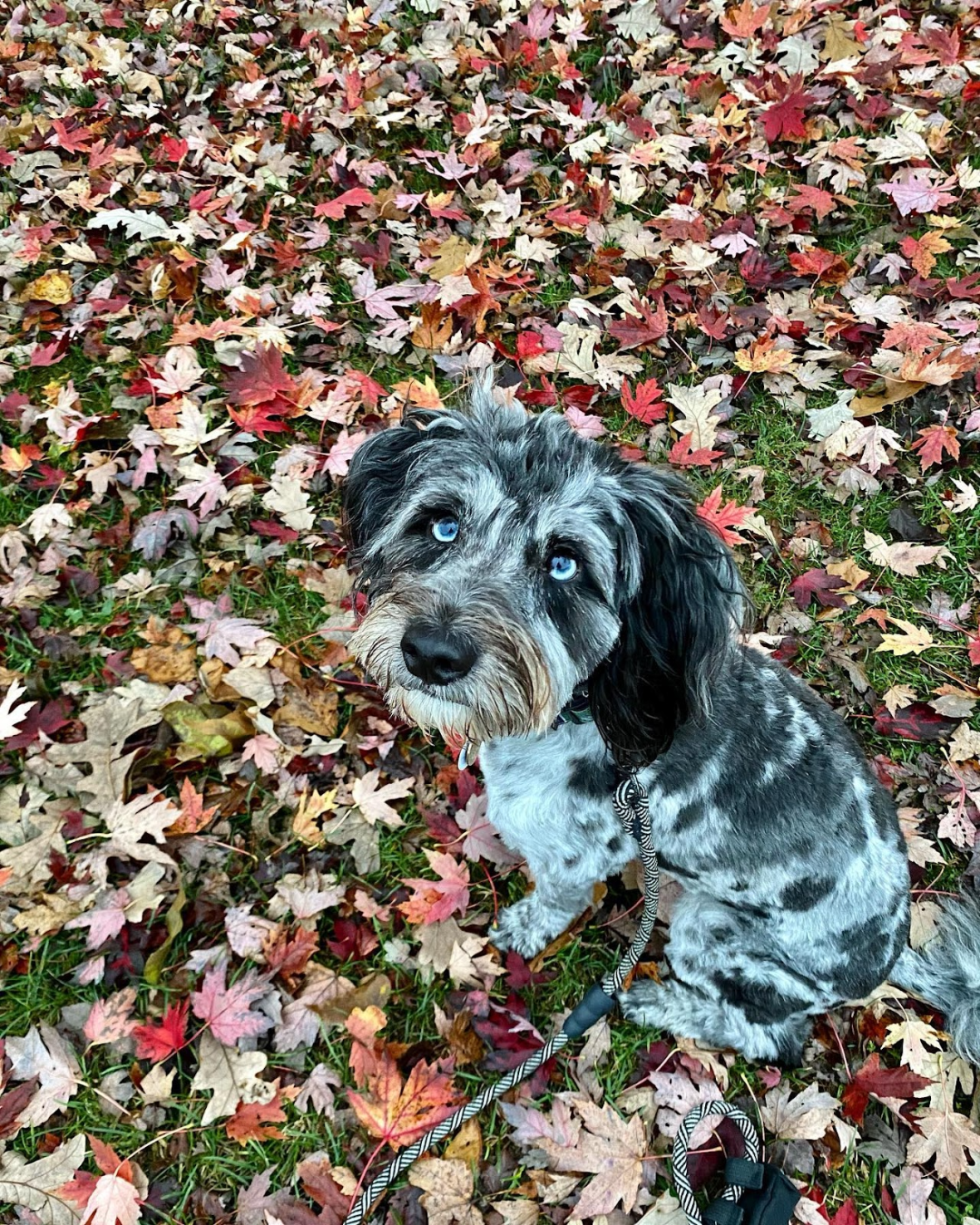
Source: @Rudy_The_Aussiedood
This adorable little boy is Rudy, a blue merle mini Aussiedoodle from Hoosier, Indiana. Rudy loves going outside no matter the weather, loves playing with his toys, and of course, loves a good long nap.
Aussiedoodle Basic Info
Aussiedoodle Temperament
The Aussiedoodle personality is a balance of sweet, loving, and playful vs. intense, watchful, and independent. In a Reddit thread on the pros and cons of owning an Aussiedoodle, one user summed it up well.
“The good: extremely trainable, loving, smart, loyal, and playful. Mine (nearly 3yo, got her as a puppy) has a really sweet and easy going temperament despite some of her issues,” said user queerproof in their comment. “The bad: mine is very alert to everything that moves, and definitely inherited some herding tendencies.”
While the instinct to herd, nip, direct, or be bossy might be a negative for some dog owners, it’s important to remember that mixed-breed dogs can inherit traits from all of their ancestors. When purchasing a designer mixed breed like an Aussiedoodle, you should be prepared for behaviors that are typical of Poodles, Australian Shepherds, and Aussiedoodles. Combined genetics can be unpredictable, so you should also be prepared for unexpected behaviors that might not be typical of either parent breed.
Because both Poodles and Australian Shepherds are extremely smart dog breeds, their offspring are often just as intelligent. Many Aussiedoodles pick up commands and training quickly and enjoy working closely with their humans on obedience. Of course, canine intelligence can be a double-edged sword.
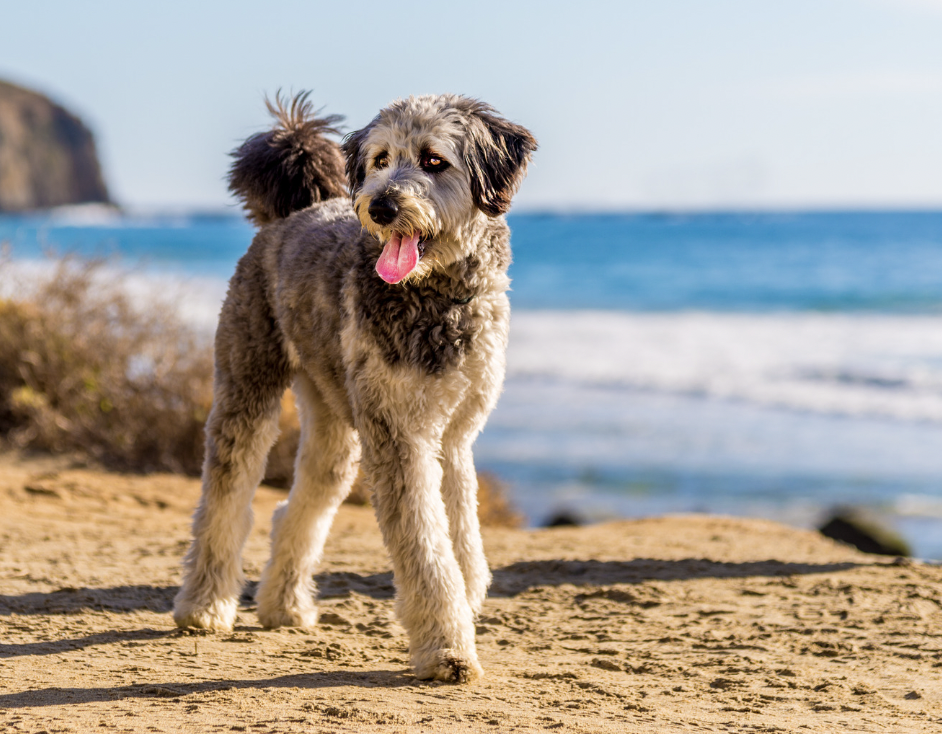
“[My Aussiedoodle is so] smart, you can’t leave him alone or take your eyes off them for very long. They will find something to do– emphasis on will,” says Reddit user _captaincool in another comment in the thread. “He’s taken hats, socks, watches, glasses, wallets, hairbrush, my phone, literally anything. He just wants to explore… by chewing…I can’t sit still with him. If I’m watching TV, I’m playing fetch, or tug. I basically can’t play video games or fixate on anything for too long or he’ll steal the Swiffer duster from my table and eat the dust pad.”
So, if you live an active lifestyle, enjoy daily training and obedience with your dog, and are willing to spend lots of time redirecting energy, an Aussiedoodle might be for you! They are definitely high energy dogs. However, if you’re a first-time dog owner, someone with a laid-back lifestyle, or have to work long hours, the Aussiedoodle is not for you.
Aussiedoodle Size
Because Aussiedoodles are not purebred dogs, their size can vary enormously. To describe size, Aussiedoodle breeders and enthusiasts categorize their dogs into four distinct categories: Standard, Medium, Mini, and Toy Aussiedoodles.
You may also hear some people talk about teacup Aussiedoodles. To qualify as “teacup,” dogs must be under 5 pounds. While it is theoretically possible to breed an Aussiedoodle this small, it’s extremely difficult and could hurt the health of the resulting puppies.
To give you an idea of how much size variation there is, let’s compare a standard Aussiedoodle full-grown to a mini Aussiedoodle full-grown. Standards typically weigh between 40–75 lbs while miniature Aussiedoodles typically weigh between 15–35 lbs.
| Aussiedoodle Size Chart | ||||
| Standard | Medium | Miniature | Toy | |
| Weight | 40–75 pounds | 25—40 pounds | 15–35 pounds | 6–15 pounds |
| Height | 18–24 inches | 15–20 inches | 12–18 inches | 10–12 inches |
It’s important to know that some Aussiedoodles—particularly toy and mini Aussiedoodles—will have more breeds than just Poodle and Australian Shepherd in their ancestry. Because the breeding of Aussiedoodles is unregulated, it can be difficult to guarantee your pup’s genetic history or health, both of which contribute to your dog’s full-grown size.
Aussiedoodle Health
Purebred Australian Shepherds and Poodles are prone to many of the same health conditions, which they may pass down to their Aussiedoodle offspring. Some of their shared health concerns include:
- Hip and elbow dysplasia
- Epilepsy
- Vision and eye problems (e.g. cataracts, retinal atrophy)
- Ear infections
- Inflammatory skin diseases
Due to the lack of regulation and oversight of Aussiedoodle breeders, many of these dogs are produced without proper genetic testing. Ethical and responsible breeders put their parent dogs through multiple rounds of testing to assess health and compatibility. Choosing the right pair of dogs isn’t just about looks—it’s about ensuring the genetic health and temperament of the puppies, too.
Again, because Aussiedoodles are unregulated, many are born in backyard breeding programs and puppy mills. The dogs being bred in these conditions are often not properly tested, or paired according to genetic/temperament compatibility.
Where To Find Aussiedoodle Puppies
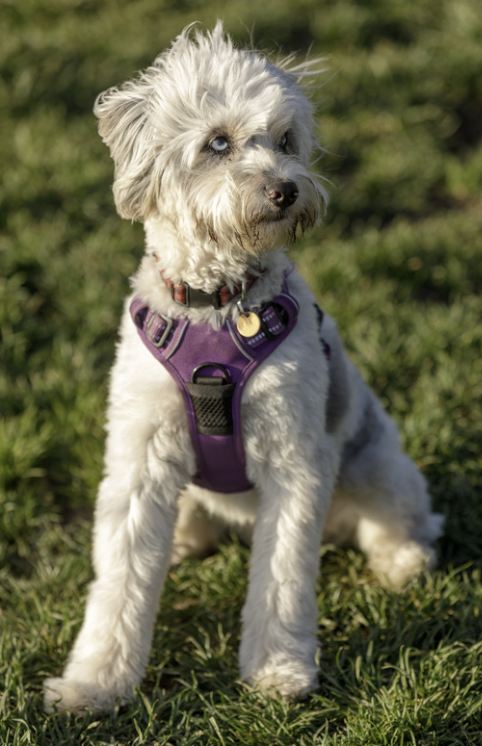
The absolute best way to bring an Aussiedoodle into your home is through rescue! Aussiedoodle adoption might not be something you’ve considered before, since these pups are advertised as “designer” breeds. Unfortunately, as Poodle hybrid dogs have become more popular, more and more have wound up in shelters and animal rescues.
We recommend starting with a visit to your local animal shelter, then turning to the internet and breed-specific rescues. Here are just a few examples of rescues that take in Poodle and Australian Shepherd mixes regularly:
- Aussie And Me Animal Rescue
- Aussie Rescue & Placement Hotline
- Australian Shepherds Furever
- Doodle Rescue Collective
- IDOG Rescue (Doodles and Poodle mixes)
- New Spirit 4 Aussie Rescue
If you still want to go the breeder route, try to follow some of these guidelines for sussing out ethical breeders:
- Ask for a referral from a veterinarian. One of the best ways to find ethical breeders is to start by asking your vet. They see dogs all day long, and they are more than likely acquainted with breeders in the area.
- Ask to meet the parents. Transparency is very important in the world of dog breeding, and your breeder should be happy to introduce you to at least one of the parents of your puppy. Refusal to do so indicates that they aren’t being honest about their true parentage.
- Ask for health records. Breeders doing their due diligence to produce puppies responsibly will have full health records for their parent dogs and puppies. This should include general testing and regular vet visits in addition to genetic testing.
Aussiedoodle FAQ
There’s plenty to know about the Aussiedoodle, and we couldn’t possibly include everything in just one blog! Of course, we’re going to try anyway, so here are some of the questions you might have after reading about the basics of this breed.
Do Aussiedoodles shed?
Yes, but it varies. Some Aussiedoodles will inherit their Australian Shepherd ancestors’ double coats and will be higher-shedding dogs. Others will have fur more similar to their Poodle parents and will be low-shedding.
Because Aussiedoodles are mixed breed dogs, it’s very difficult to know exactly what fur type they will have until they are born. Most will be moderate to low shedders, but some will shed a lot, especially in Spring and Fall.
Are Aussiedoodles hypoallergenic?
No. Some Aussiedoodles are low-shedding, which means they drop less fur and dander than moderate and high-shedding dogs. Some people with dog allergies may find that low-shedding dogs do not trigger their allergies, while others will see absolutely no difference.
In the case of Aussiedoodles, the amount of dander and fur they drop will vary between individuals, but none are entirely hypoallergenic.
What is the average Aussiedoodle price?
Unregulated breeds like the Aussiedoodle are sold at a wide range of prices, all dependent on the whim of the breeder. Some Aussiedoodles may be sold for as little as $500, while others may go for as much as $5,000. On average, most people spend around $2,500 on their Aussiedoodle puppies when buying from a breeder.
If you choose to adopt an Aussiedoodle rather than buying one from a breeder, you’ll pay around $150—$500.
How much should I expect to pay for Aussiedoodle grooming?
It’s very important to get your Aussiedoodle haircuts and/or baths regularly, whether you do it yourself or bring them to a professional groomer. A basic bath and brush out will typically cost between $40–$100 for an Aussiedoodle, while a full groom will be between $75–$200, depending on how much work needs to be done and where you go.
The complexity of your Aussiedoodle’s groom will also determine the final price. For example, a puppy or teddy bear cut Aussiedoodle groomed at a moderately priced groomer will cost around $75—$130. A more involved groom with more intricate shaping, trimming, or dying at a high-end groomer will naturally cost more.
In general, Aussiedoodle owners should expect to pay around $75–$150 every 6 weeks to get their pups groomed.
What are some cute and unique Aussiedoodle names?
What you name your dog ultimately ends up being a reflection of your personality! Dog names are highly subjective, and in the end, you should choose something you love. To help you get inspired to name your Aussiedoodle, we’ve collected a handful of fun and unique name suggestions.
Dingo — for Australia’s wild dogs
Roo — like a kangaroo!
Barbie — need we say more? Throw a shrimp on the…
Bindi — meaning ‘butterfly’ in Noongar (the language of Aboriginal Australians)
Croc — like crocodile, obviously!
How long do Aussiedoodles live?
A typical Aussiedoodle lifespan is about 10–15 years. Miniature and toy Aussiedoodles are known to live slightly longer than medium and standard Aussiedoodles.
How big do Aussiedoodles get?
Unless you’ve met your pup’s parents, it can be very difficult to know just how big an Aussiedoodle puppy will get. Aussiedoodles vary in size enormously, with some growing to be as large as 75 pounds, and others remaining quite small at less than 20 pounds.
If a puppy is advertised as a “standard Aussiedoodle,” you should expect it to be around 40–75 pounds and 18–24 inches tall when fully grown.
What’s the difference between an Aussiedoodle vs. Bernedoodle?
An Aussiedoodle is a mix of an Australian Shepherd and a Poodle. Bernedoodles are a mix of Bernese Mountain Dog and Poodle. Both are considered “Doodles,” but this is where the similarities between these mixes end. Aussiedoodles are higher energy than Bernedoodles, which are often favored for their patient (though sometimes skittish) demeanor.
What is a Golden Aussiedoodle?
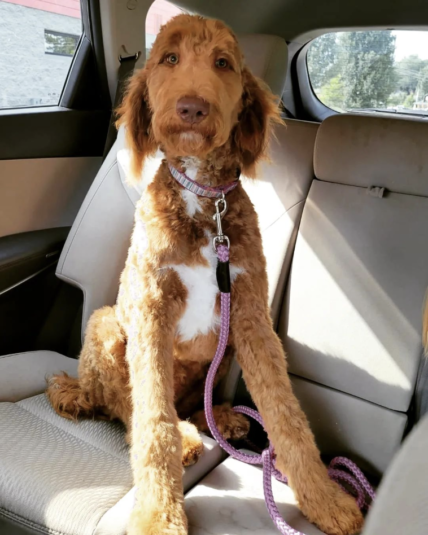
A Golden Aussiedoodle is a mix of an Australian Shepherd and a Goldendoodle. Goldendoodles are mixed-breed dogs with Golden Retriever and Poodle heritage, so Golden Aussiedoodles are considered a mix of three breeds. Curious to know what a Golden Aussiedoodle looks like? Take a look at Motley!
A service dog in training, Motley is a beautiful Golden Aussiedoodle with fantastic manners, especially for a young pup!
Learn more about what it takes to own an Aussiedoodle in our guide to the best biologically appropriate dog food for Australian Shepherds!
The three foods that are super healthy and that almost every dog loves, even the pickiest dogs, are:
1. The Farmer’s Dog.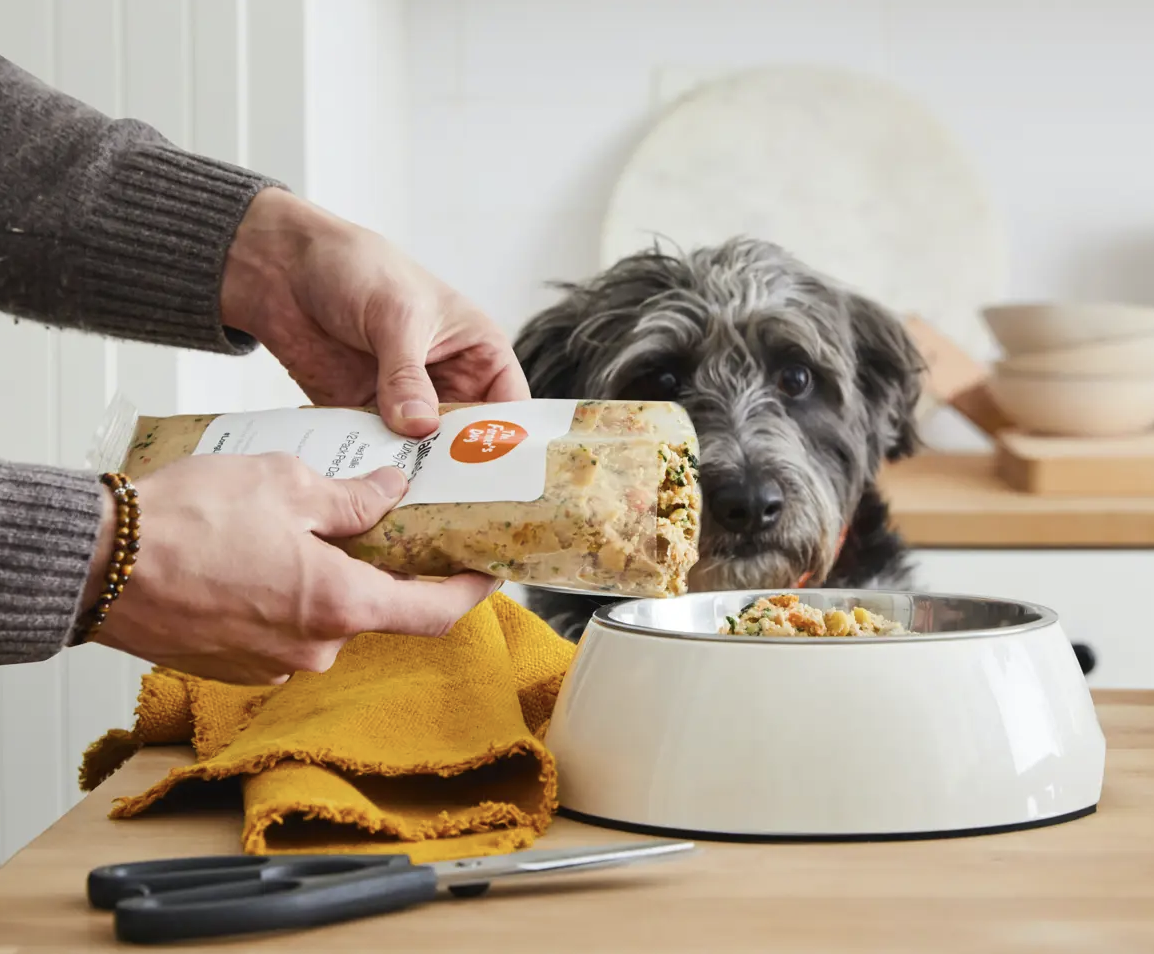
This is a fresh-frozen food that’s delivered to your home in just the right amounts for your dog. There are a number of fresh frozen dog foods available on the market and I tested them all. The Farmer’s Dog came up the winner with my picky dogs. You can see the fresh frozen food test here.
Save 60% on your first order
—
2. Sundays Food For Dogs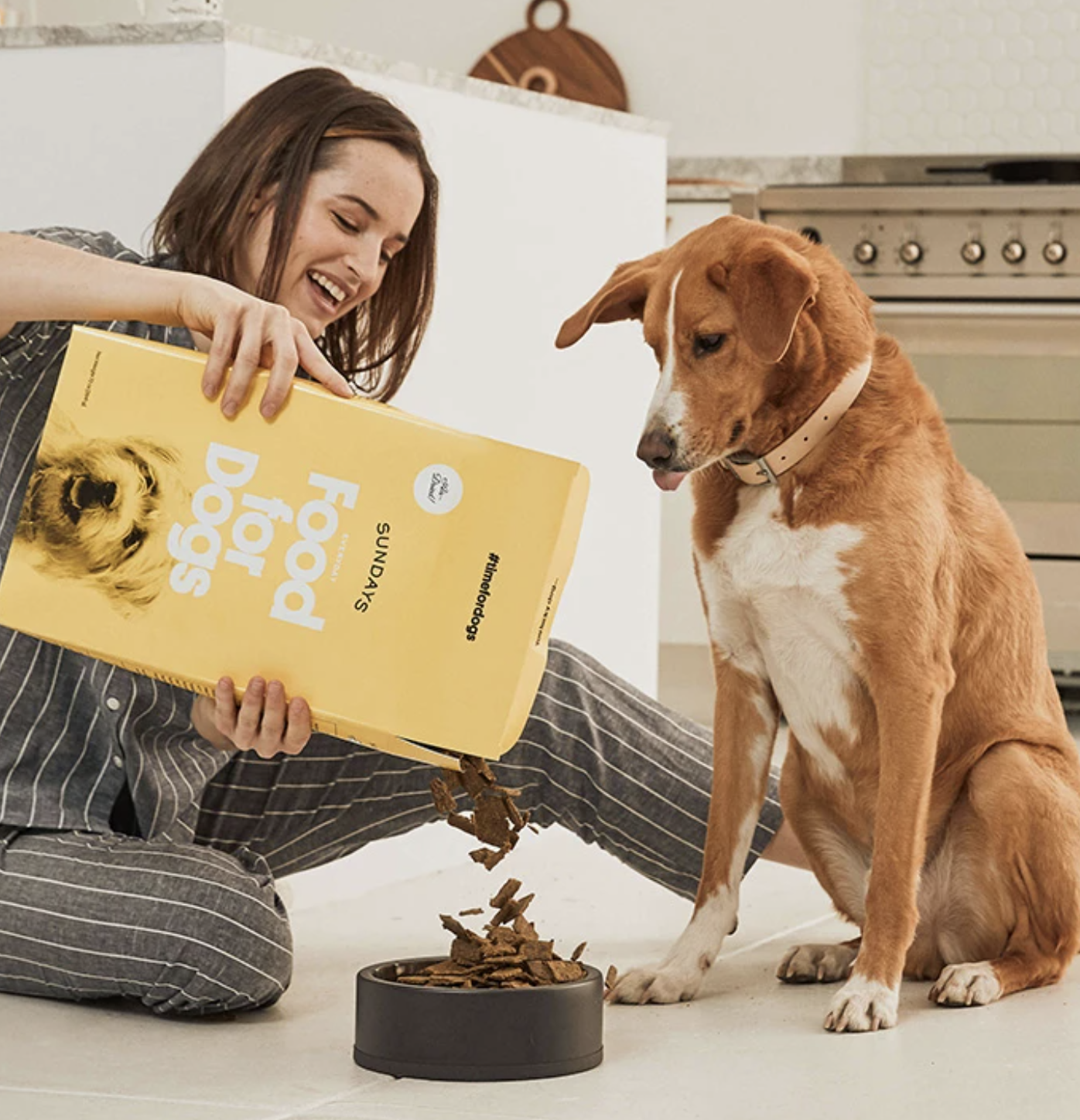
This is an air-dried food. It has the convenience of kibble (just pour it in the bow) but is much much healthier. It’s like little pieces of jerky, so dogs go crazy for it. There are a number of air-dried foods on the market. My dogs tested 3 of them. You can see the results of the air-dried food test here.
Get 35% off your first order + free shipping w/ code ROCKY35
3. We Feed Raw.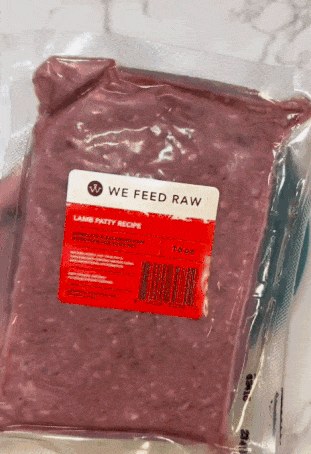
This raw food for dogs comes delivered to your home is perfectly sized portions for your pup. They primarily source their ingredients from trusted U.S. farmers, with two exceptions: venison and lamb. These ingredients are sourced from New Zealand, where some of the highest-quality and most ethically raised venison and lamb can be found. Pasture-raised and grass-fed and finished, we highly recommend trying these formulas if you’re interested in the best-quality ingredients. Save 25% on your first order.
Supplements: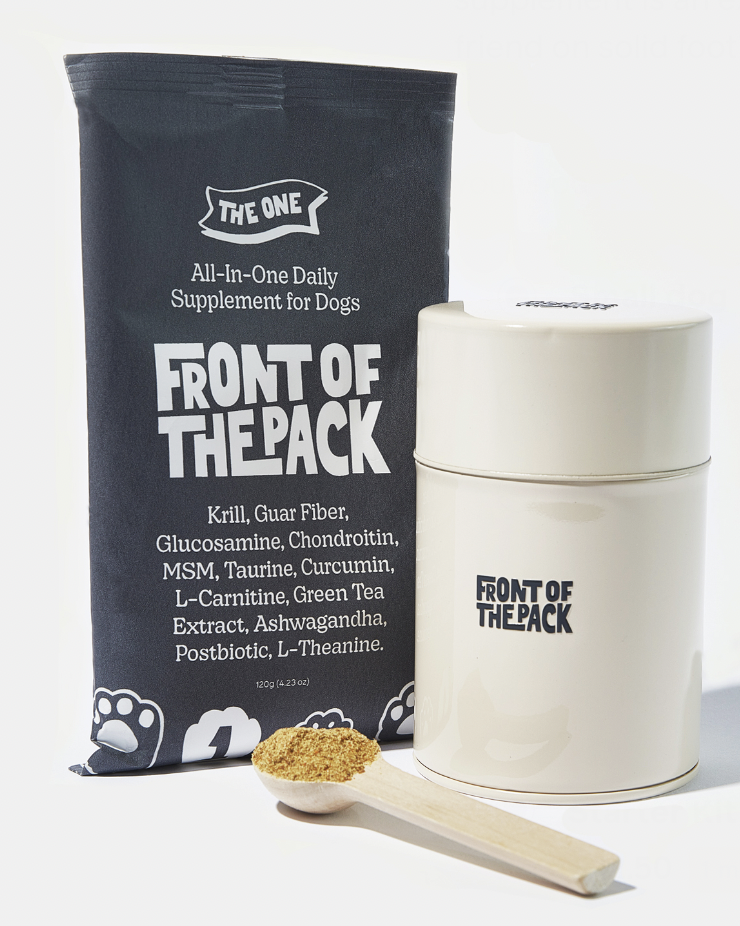
I highly recommend using a supplement on your dog’s food, not matter what you feed them, to ensure the meal is balanced and they are getting all the right supplements to help them stay healthy. The supplement I use is called The One from Front of the Pack. It has 12 ingredients that have been clinically-proven to keep your dog’s joints, skin, heart, digestion, and even their breath in tip-top shape. It’s also a powder, so easy to sprinkle on your dog’s food. For a limited time, when you buy one month you get a second month free.
Related Article:
- 67 Shades of Doodles: Discovering the Charm of These Popular Designer Dogs
- Meet The Aussie German Shepherd Mix
- 6 Biologically Appropriate Dog Foods for Australian Shepherds

